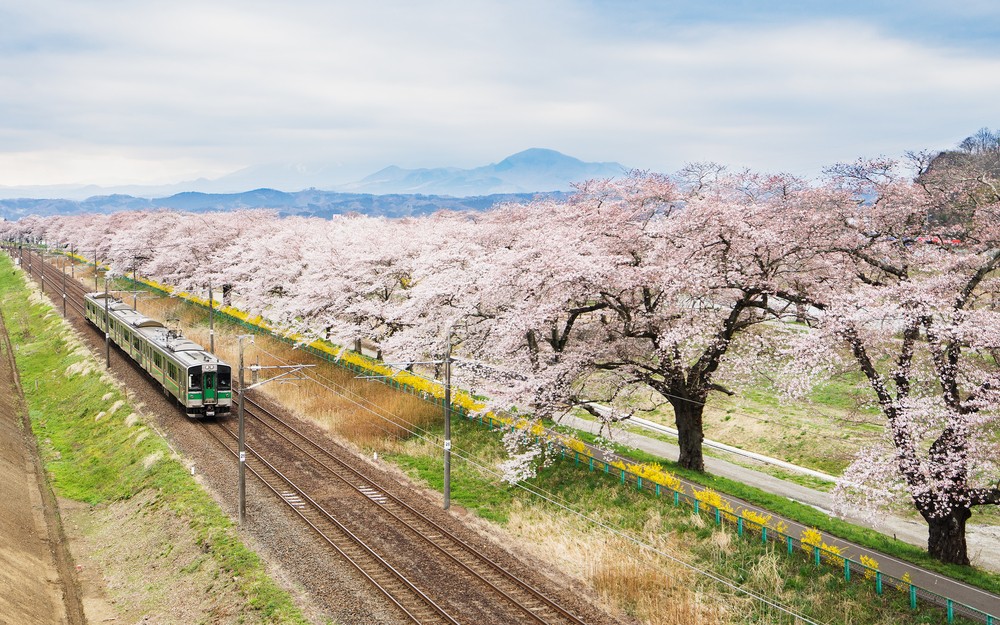Popular Reads
Top Results
Can't find what you're looking for?
View all search resultsPopular Reads
Top Results
Can't find what you're looking for?
View all search resultsFor train lovers, a bargain 760-km trip may be just the ticket
Change text size
Gift Premium Articles
to Anyone
O
ne ticket for ¥140 (US$1.3). That’s how little it can cost to make a 20-hour, 760-kilometer trip through Tokyo and six surrounding prefectures, including the Boso Peninsula in Chiba Prefecture.
Did you know that the fare between two nearby stations doesn’t change even if you take an extraordinarily roundabout route between them? The practice is widely known among railway enthusiasts and is “approved” by railway companies.
Japan Railway companies have a special rule that allows passengers to travel through zones covering major urban areas such as Tokyo and Osaka and their suburbs for the lowest fare, regardless of the routes taken. This rule is valid when using a “traversal route,” in which passengers meet conditions such as not passing the same station twice and not exiting ticket gates. Railway buffs call such railway trips “omawari josha,” literally meaning a grand roundabout ride.
To draw up my own plan, I sought advice from Makoto Kurosawa of Chofu, Tokyo, who traveled 500 kilometers through Tokyo and six other prefectures in August last year.
“This is a pleasure ride for middle-aged and elderly people who have free time. It’s cool on the train, and you have no trouble getting food and drinks as there’re many shops inside stations like Omiya and Ueno,” the 81-year-old Kurosawa said. “The best part of this trip is obtaining a feeling of accomplishment.”
He recommended an easygoing trip to enjoy food, while proposing that good walkers might want to try trips focusing on long distances.
Restroom concerns
After choosing Ikebukuro as the departure station and the next stop, Mejiro, as the disembarkation point for my trip, I examined the train timetable. In late August, I set out on the journey, first spending three hours heading for Tateyama, Chiba Prefecture.
I was worried about going to the restroom while on the 20-hour train trip. If I got off the train, I would have to wait for an hour to catch the next one, and that would throw off my initial plan.
Apparently because of my ambitious plan, I was nervous and began suffering from an upset stomach when the train was traveling near Kinshicho. Fortunately, there was a bathroom on the train, and I survived.
I moved to a window seat in a compartment after passing Kimitsu. From the window, Tokyo Bay was occasionally visible, while there were glimpses of the Miura Peninsula on the opposite shore. The building enclosing Tateyama Station has a tropical-themed design that excited me as a traveler. People surfing on the Pacific along the Sotobo Line between Ubara and Katsuura stations came into view. The sight of them trying to catch waves was dazzling for me.
(Read also: Lost phone in commuter train sparks Jakarta-Tokyo friendship)
I then headed for Choshi, and the sea disappeared from view as the railway tracks moved away from the Kujukurihama seaside area. While on the Narita Line, I saw an airplane soaring through the sky.
The joy of station dining
After arriving at Abiko Station, I went to Yayoi-ken, a soba shop on the train platform where the artist Kiyoshi Yamashita (1922-1971), known for gallivanting around Japan, worked for a time.
I was stunned by the jumbo karaage soba, a noodle dish featuring huge pieces of deep-fried chicken, each weighing more than 200 grams. The tender and juicy chicken goes well with the mild soba soup. It took me only 10 minutes to eat it.
After changing trains on the Joban, Mito and Ryomo lines, I reached my hometown of Takasaki, Gunma Prefecture. In an attempt to make it feel like I was back home, I bought a Daruma Bento, a popular boxed meal at Takasaki Station. While traveling to Omiya Station, Saitama Prefecture, in a Green Car superior class seat, I opened the bento. As 15 hours had passed since I started this trip, the bento — rich in mountain foods that I had not tasted in 30 years — was particularly delicious.
The basic fare is ¥140, but you can upgrade if you pay extra for super express trains and Green Car seats. While waiting for the next train, I had a glass of beer at a shop inside Omiya Station to prepare for the last stage of my journey.
However, I felt the three hours it would take to reach my final destination from this location was especially long. Traveling on the train through busy urban areas suddenly increased my fatigue. I changed trains on the Saikyo, Musashino, Nanbu and Keihin-Tohoku lines, but fatigue and drowsiness made me feel sluggish. Changing trains was also tiring. My pleasure trip was turning into a journey of agony.
After arriving at Shinagawa, I dragged myself with exhaustion onto a Yamanote Line train for the final leg. I now had my eyes closed and was anxious to arrive at Mejiro.
I finally reached my destination at 12:15 a.m. I asked a station employee at the ticket gate if I could keep the train ticket as a memento from my roundabout trip. The employee then politely stamped it.
I had traveled on 15 train lines and transferred 18 times. The distance traveled was 760.5 kilometers — equivalent to the straight-line distance between Tokyo and Yamaguchi Prefecture. After this trip, which required almost 20 hours, it is no exaggeration to say that I had the sense of accomplishment that one might have after climbing Mt. Fuji.
This article appeared on The Japan News newspaper website, which is a member of Asia News Network and a media partner of The Jakarta Post







